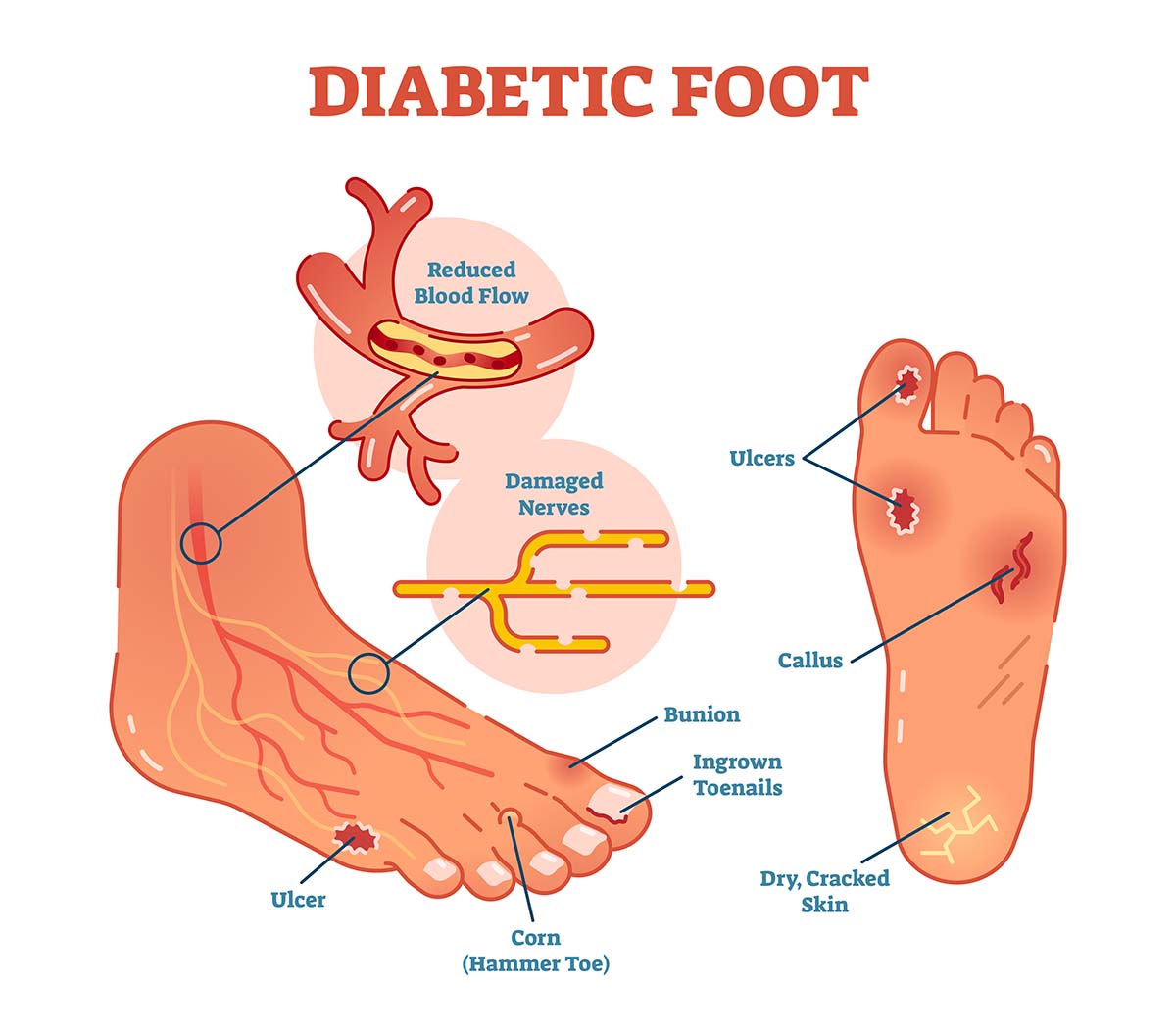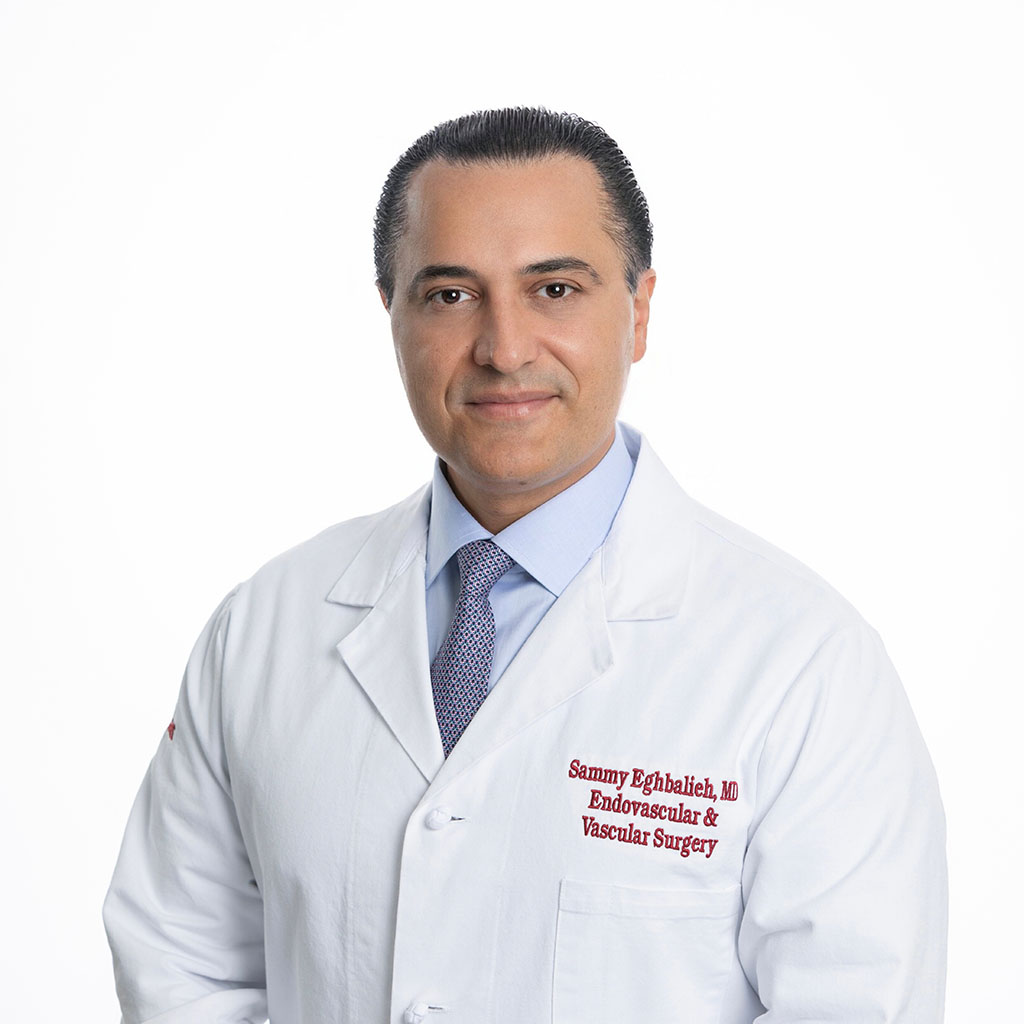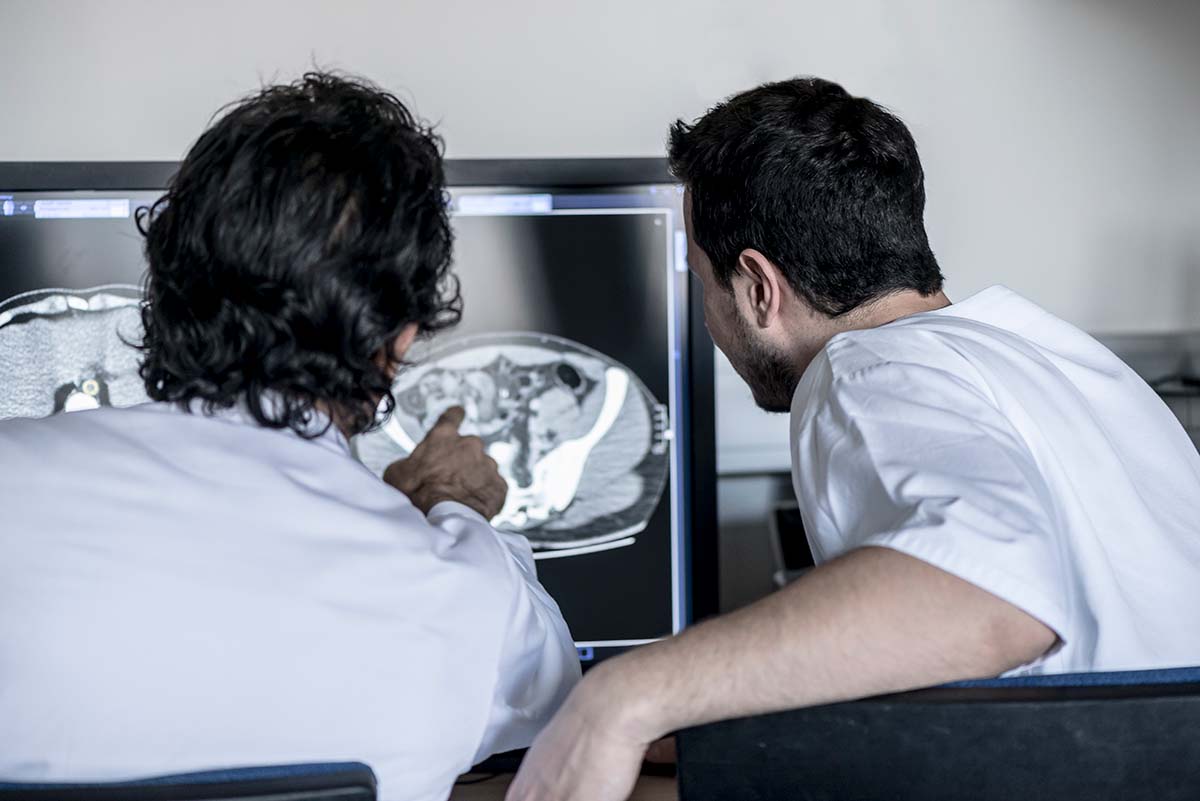Diabetic Foot Ulcers
An ulcer is an open wound or sore that does not heal. When you have foot ulcers, you are very susceptible to infection. Once the non-healing wound becomes infected, you are now at risk for an amputation. About 25% of diabetic patients will need an amputation after an ulcer becomes infected.
“About 54% of all surgical amputations result from complications of vascular diseases and other conditions that affect blood flow, such as diabetes and peripheral artery disease (PAD).” – Johns Hopkins Medicine
A Common Problem Among Diabetics
Up to 15% of diabetic patients will suffer from foot ulcers. These ulcers usually happen on the bottom of your feet. Therefore, it’s important to regularly check your feet if you have diabetes or check the feet of your loved ones that have diabetes.
Foot Ulcers Q & A
Appearance of Diabetic Foot Wounds
Ulcers can present in a variety of shapes, sizes and colors. If you notice any open wound or sore on your foot, contact your vascular surgeon for a physical examination of the area. Be on the lookout for changes in the skin on your feet, the following are early signs of an ulcer:
- Rash
- Redness
- Dry skin
- Scaly skin
- Cracks in the skin
What are the risk factors for foot ulcers?
If you have diabetes, you are at high risk for developing foot ulcers. Diabetics sometimes are unaware of foot wounds or ulcers on their feet due to diabetic neuropathy. Diabetic neuropathy is a condition that causes diabetics to lose feeling in their feet and hands. Risk factors include:
- Diabetes
- Neuropathy from Diabetes
- Eye, kidney, or heart disease from diabetes
- Blood circulation issues
- Peripheral artery disease (PAD)
- Obesity
- Bunions or hammertoes
- History of smoking
- Hispanic/ black
Treatment Options for Foot Ulcers
Foot ulcers can be diagnosed by your physician during a physical exam in the office. Depending on the severity of your ulcers, your physician might recommend non-surgical treatment. These options include:
- Advanced wound care
- Antibiotics
- Wound draining
- Crutches or wheelchair (offloading)
- Elevation of the foot
It’s critical to see a specialist early in the treatment of foot ulcers. Inappropriate wound care in the early stages can accelerate the wound and take away this option in the future. If your diabetic foot ulcer advances to the severe stage, this will put you at risk for amputation and you may require advanced limb salvage efforts. If your ulcer is in the advanced stages, you may require surgical treatment which will include one of the following:
- Angiogram and minimally invasive endovascular intervention with balloon or stent
- Surgical debridement of the wound
- Amputation of limb, foot, toe, or other bone
Contact our office if you or a loved one may be at risk for a foot ulcer or limb salvage and remember to check your feet regularly if you have diabetes.
Our Vascular & Endovascular Surgeons
It's important to remember not all physicians are trained in advanced vascular and endovascular surgery. It’s a good practice to get multiple opinions and do research on the surgery and the physician.








